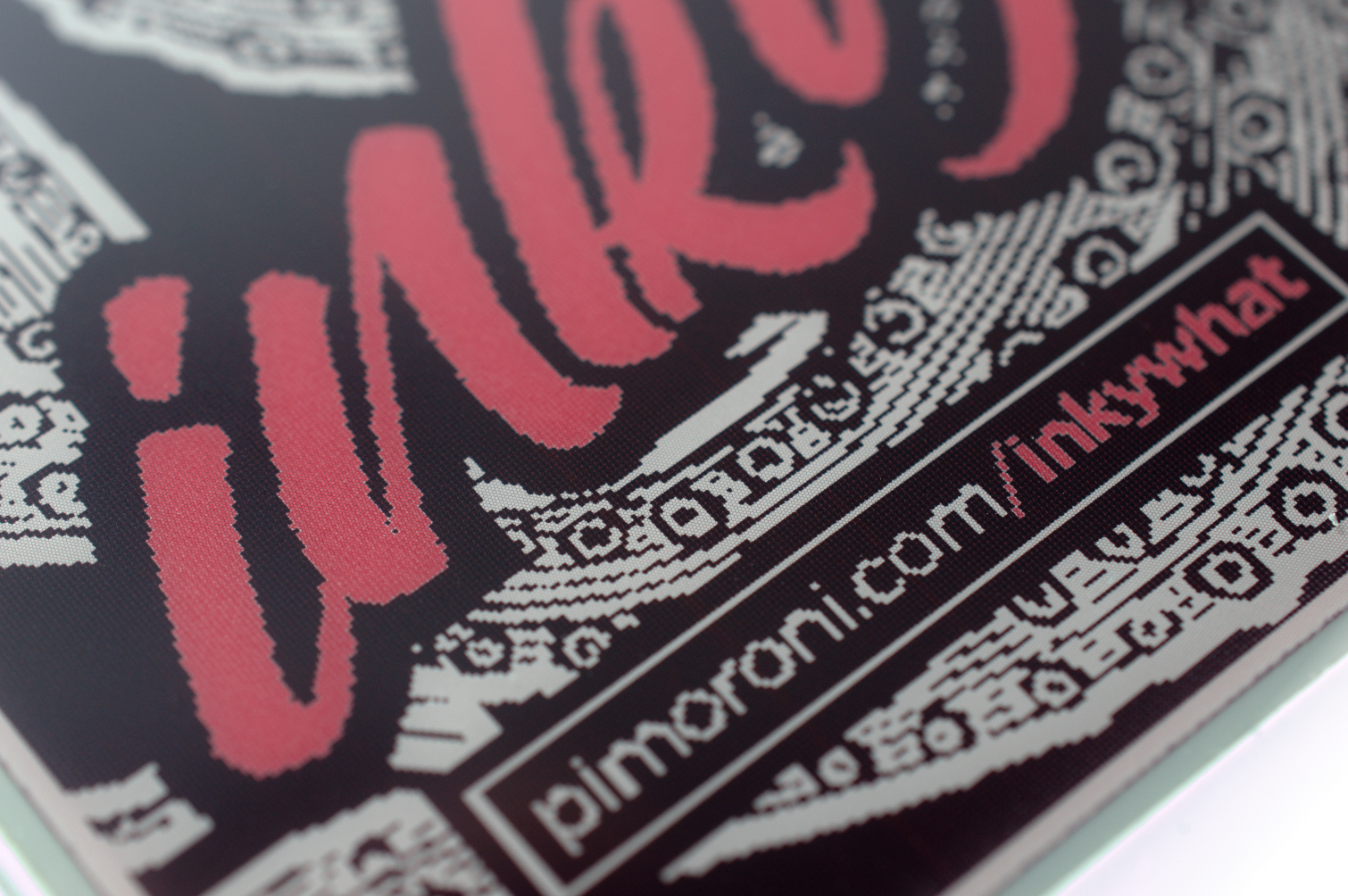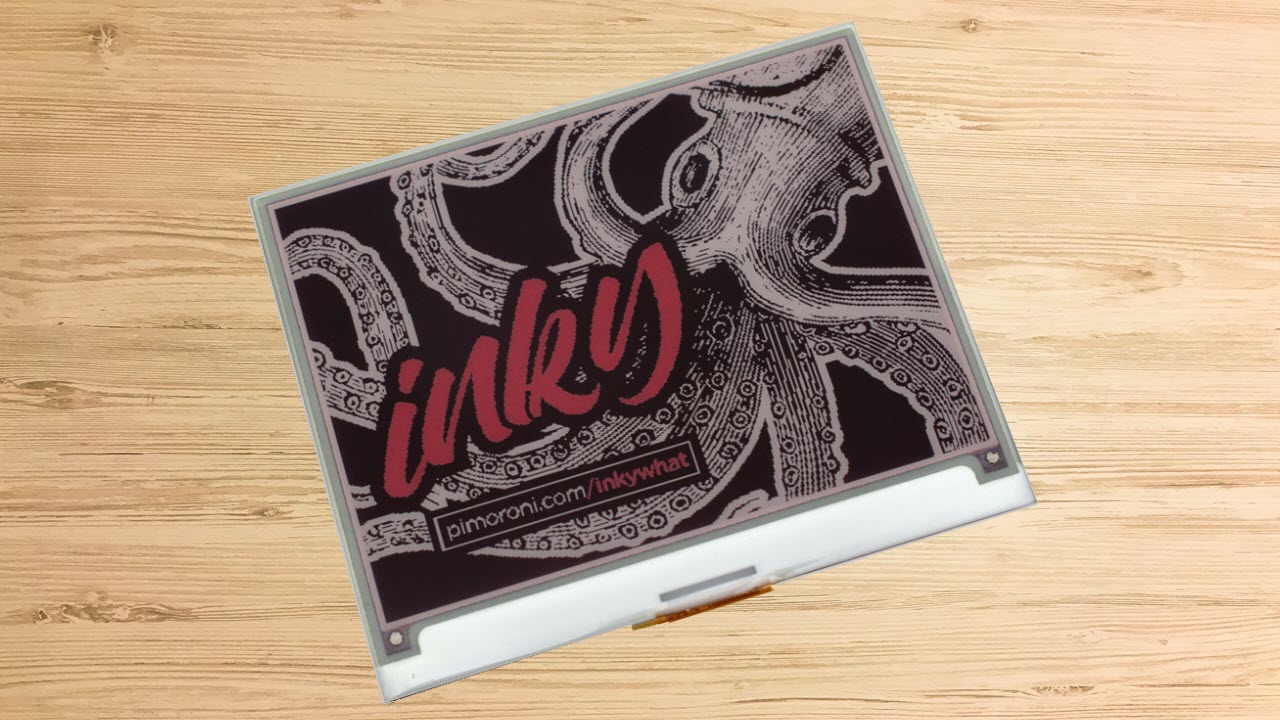Tom's Hardware Verdict
It’s not cheap, but the Inky wHAT makes for a surprisingly versatile display if your use-case doesn’t include animations or frequent updates.
Pros
- +
Simple installation
- +
Brilliant clarity in sunlight
- +
Draws nearly no power when not updating
Cons
- -
Low resolution
- -
Three-color limit
- -
Very slow refresh rate
Why you can trust Tom's Hardware
The Raspberry Pi family of single-board computers is a favourite for embedded projects, in no small part thanks to the wide variety of models on offer. Those seeking top performance can pick up a Raspberry Pi 4, while those who need a minimum of power usage or a small form factor can opt for the compact Raspberry Pi Zero family.
Many projects, though, need some way of displaying data. The Raspberry Pi’s HDMI or composite video outputs work well for desktop use, but for embedded use it’s time to investigate a display. Numerous companies offer liquid-crystal display (LCD) options, including the Raspberry Pi Foundation’s own Touchscreen Display, but Pimoroni’s Inky wHAT takes a different approach: it’s an electronic paper panel.
What the wHAT?





Most commonly found on electronic book readers, electronic paper is an electrophoretic display: when a pixel’s charge is altered, it displays either black or white - though, in most cases, the black is a little light while the white is a little grey. Unlike a traditional LCD panel, it requires no electricity unless it’s changing states - pull the power and you’ll retain whatever image was last displayed, though it’s likely to fade over time.
Pimoroni first brought e-paper technology to the Raspberry Pi with the Inky pHAT product line, offering a compact display tailored to - though not exclusively compatible with - the Raspberry Pi Zero family. The Inky wHAT is its successor: a “wide HAT,” the Inky wHAT packs a 4.2” e-paper screen which sits on top of the Raspberry Pi’s GPIO header.
Installation is quick and easy, as you’d expect from a Pimoroni product: add the bundled Booster Header, attach four mounting pillars, slide the HAT onto the GPIO header - taking care of the fragile glass display portion - and screw it into place. Installing the software - an open-source Python library - takes but a single command, after which you’re free to work through the examples provided to learn how to display images and text.
There are disadvantages to the Inky wHAT over a traditional LCD panel, though. First, it has no lighting of its own: in sunlight or bright artificial light, it’s as clear as day; in the dark, it’s entirely invisible. It’s also rather low resolution, even for its size, at 400x300 pixels (119 pixels per inch.) It’s also only capable of displaying three colours: the off-white grey background, a slightly pale black, and either yellow or red depending on the model chosen - with a two-colour black-and-white option for those looking to save a little money. Finally, the refresh rate is measured in seconds-per-frame rather than frames-per-second - up to 30 seconds of flickering per image in three-colour mode, dropping to under five in black-and-white mode.
Bottom Line
The Inky wHAT, then, isn’t something you’d want to use to display photos, or animations, or even the Raspberry Pi desktop - but it’s not designed for that. As a display for relatively infrequently updated information - say, a weather forecast, server status, Bitcoin prices, airport departures - which is only likely to be used in the day, it’s fantastic. The imagery is clear, the colour surprisingly bright, and the lack of backlighting makes it less fatiguing to read.
Get Tom's Hardware's best news and in-depth reviews, straight to your inbox.
There’s also a considerable advantage in power draw. The Inky wHAT is very eco-friendly: with no backlight nor constant need to refresh the display, it’s a great option for battery-powered projects that would otherwise be quickly drained by a traditional LCD. At idle, the extra power required by the control circuitry is minimal; even at the peak of its refresh cycle, as it blanks the display ready for the next image, you’re looking at a maximum additional at-the-wall power draw of around 0.3W quickly dropping to around 0.1W - on top, of course, of whatever your Raspberry Pi of choice requires.
The only caveat is the price. At $42.85 for the black-and-white model or $49.91 for the three-colour variants, the Inky wHAT is priced similar to the full-colour high-resolution HyperPixel 4.0 family - a much more flexible option for any project involving colour imagery, animation, or video, but one which will draw power at all times and be considerably less readable in sunlight. For anyone on a tight budget, lower-resolution colour displays can be found for just over half the price - but which come with the same high power demand as the HyperPixel 4.0.
Image Credits: Gareth Halfacree
MORE: All Raspberry Pi Content
MORE: Raspberry Pi Projects and Guides
